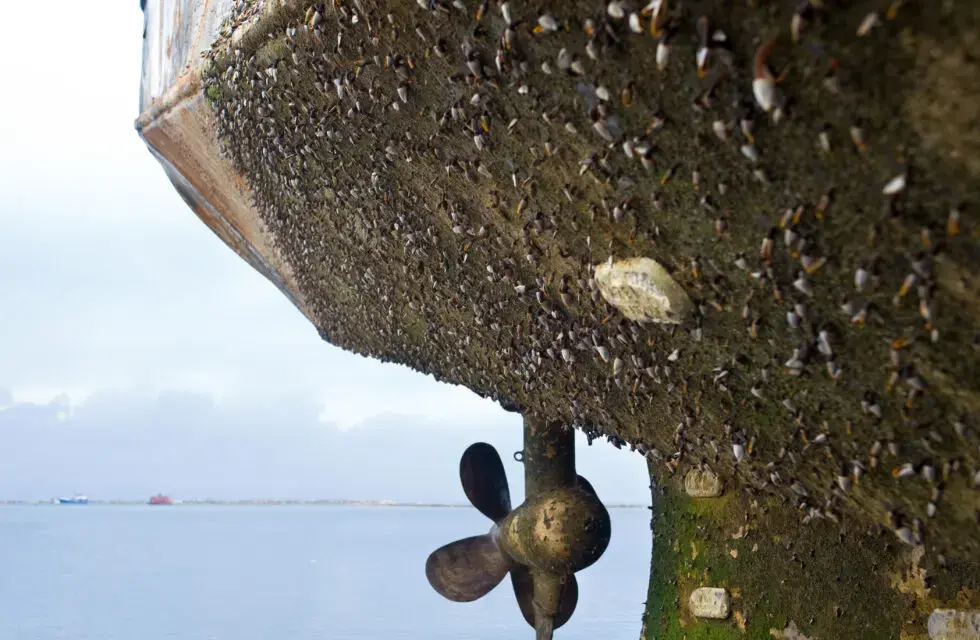In measurement technology for maritime and brackish water environments, piezoresistive sensors are indispensable tools. They provide precise data on pressure, level, or other parameters—even under extreme conditions. However, two invisible adversaries can significantly impair the performance and lifespan of these sensors: biofouling and hydrogen entry through electrolysis processes. This article explores both phenomena and presents practical solutions.
Biofouling: When Life Colonizes Sensors
Biofouling refers to biological growth and the accumulation of microorganisms, algae, plants, and small animals on moist surfaces. For measurement technology, this means:
- Measurements become inaccurate
- Sensors need more frequent maintenance or replacement
- Operating costs increase
Primarily affected are systems with direct water contact, such as pond systems, ship hulls, pipelines, offshore platforms, water reservoirs, and the sensors installed there. Biofouling is a widespread problem in the maritime industry, environmental measurement technology, and water management. Various antifouling measures are used to combat it—these include special coatings, ultrasonic technologies, or electrochemical methods designed to prevent or delay organism growth.
Antifouling Strategies Overview
- Toxic coatings: Effective but increasingly restricted or banned due to environmental regulations like the EU Biocidal Products Regulation.
- Non-toxic anti-adhesion coatings: Usually based on silicone or polymers, prevent adhesion through low surface energy.
- Ultrasound technology: High-frequency vibrations disrupt organism settlement.
- Pulsed laser impulses: Plasma technology kills biofouling precisely.
- Electrolysis with copper ions: Effective but with potential side effects—particularly on sensors.
Electrolysis: When Protection Becomes a Hazard
In electrolytic antifouling systems, a voltage difference releases copper from an anode to inhibit biological growth. However, hydrogen ions (H⁺) are also produced, which move toward the cathode—commonly the ship hull or tank housing.
The problem arises when sensors are installed very close to this cathode:
- The positively charged hydrogen ions migrate toward the sensor
- If they pass through the sensor's thin membrane, they form molecular hydrogen (H₂) inside
- This accumulates in the fill fluid
Long-term damage from hydrogen accumulation
The consequences for piezoresistive sensors are serious:
- Membrane swelling: The membrane expands uncontrollably
- Measurement drift: Sensors produce inaccurate, unstable data
- Reduced lifespan: Early failure is common
Material Choice as a Key: Why Stainless Steel Is Not Enough
Long-term studies of stainless steel sensors installed for two to three years in ballast tanks show clearly:
- Hydrogen diffusion through the membrane
- Chloride-induced crevice corrosion
- Mechanical fatigue
On the other hand, titanium is advantageous due to:
- Excellent corrosion resistance
- Low hydrogen permeability
- Long-term stability in sea and brackish water
STS Solution: Titanium Sensors for Maritime Long-Term Use
Based on over ten years of experience, STS Sensors consistently uses for maritime applications:
- Piezoresistive sensors without elastomers
- Titanium housing and titanium membrane
- Robust design for extreme environmental conditions
The result: Durable, reliable sensor solutions for the most demanding applications in ballast tanks, offshore facilities, port infrastructures, and underwater measurement systems.
Conclusion: Recognize Invisible Risks and Leverage Measurable Benefits
Using sensors in maritime environments requires more than just measuring accuracy—it’s about an awareness of biofouling and electrolysis-induced hydrogen entry as serious risks—technically, economically, and environmentally.
With thoughtful design, suitable materials, and extensive experience, STS offers a solution that not only measures but also functions long term.
